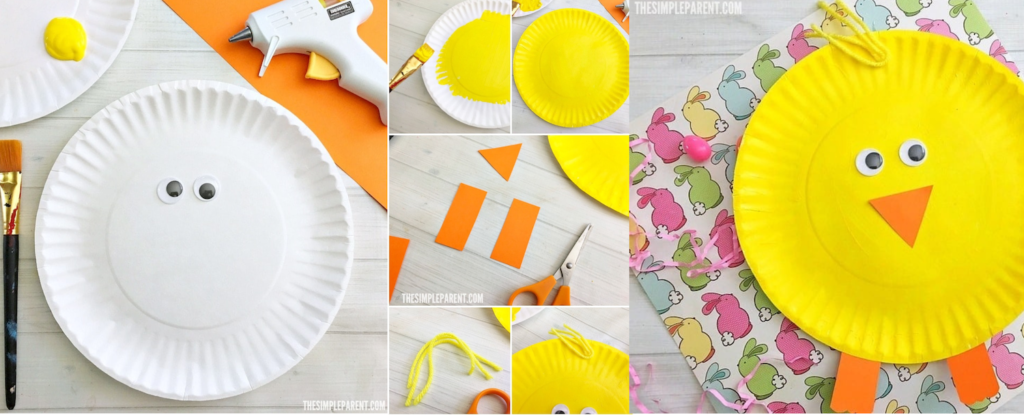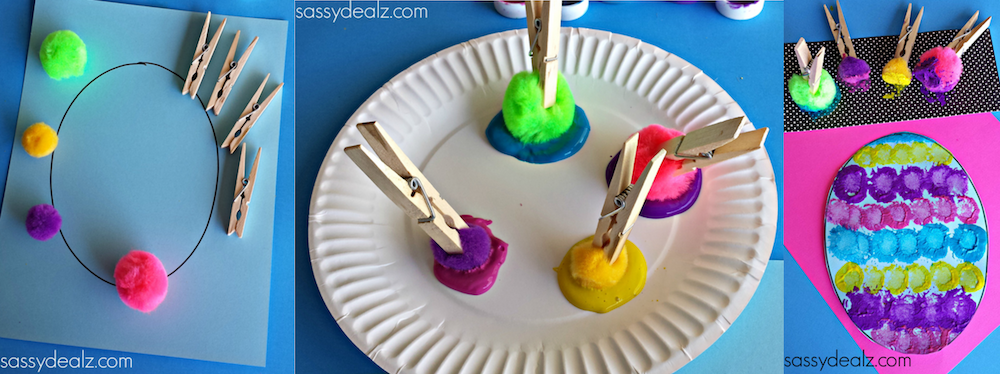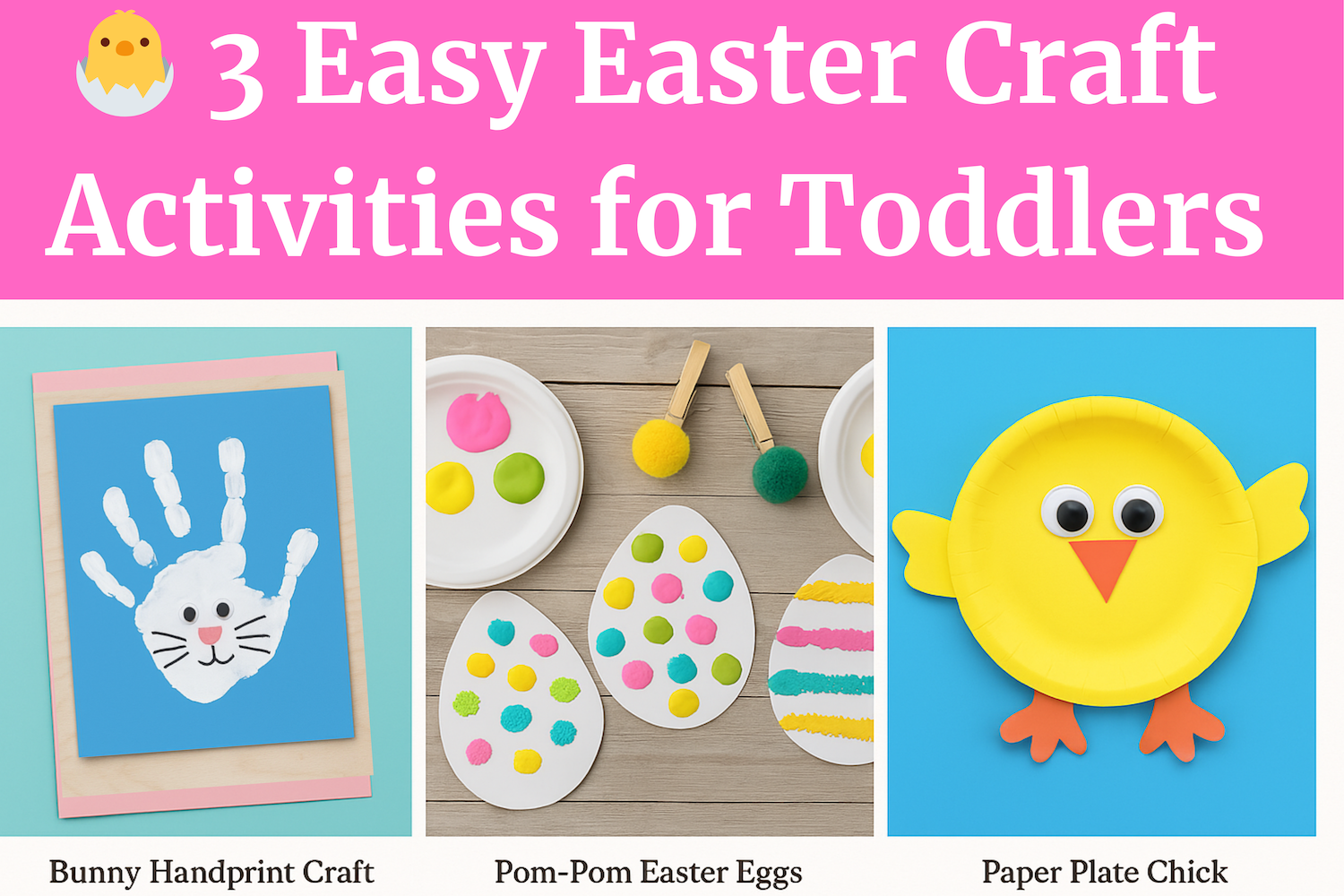Joyful, Mess-Free Projects That Boost Creativity and Development
Easter crafts are more than just a way to keep toddlers busy—they’re a powerful opportunity to nurture your child’s early development in a fun, hands-on way. These simple activities build fine motor coordination, support sensory processing, and even enhance early language and emotional bonding. And best of all? They’re easy to set up with everyday items you probably already have at home.
Let’s hop into three easy Easter crafts that spark smiles and support growing minds.
1. 🐥 Paper Plate Easter Chick
A bright and bouncy project that promotes planning, patience and play.
Turning a plain paper plate into a playful Easter chick is a joy for toddlers. But beyond the fun, this activity supports important developmental milestones—from problem-solving to sequencing.
Developmental Benefits:
-
Bilateral coordination: Toddlers use both hands together when holding the plate and applying glue or features.
-
Cognitive planning: Following a step-by-step process teaches sequencing and early executive functioning.
-
Emotional expression: Giving the chick silly eyes or a unique beak helps toddlers express personality and build confidence.
What you’ll need:
-
Yellow paper plate (or paint a white one yellow)
-
Orange and yellow construction paper
-
Googly eyes
-
Glue stick
-
Safety scissors (adults only)
Instructions:
-
Paint the paper plate yellow (if needed) and allow to dry.
-
Cut out wings, a beak, and two little feet.
-
Help your toddler glue the wings to the sides and feet to the bottom.
-
Stick on the beak and googly eyes.
-
Display their feathered friend on the fridge or wall with pride!
📸 Visual Guide:

2. 🎨 Pom-Pom Easter Egg Painting
A colourful dab-and-dot activity that boosts creativity and coordination.
Pom-pom painting is the perfect introduction to art for toddlers. Swapping traditional brushes for pom-poms clipped into pegs allows for easier gripping while encouraging creativity and independence.
Developmental Benefits:
-
Fine motor control: Squeezing the peg and dabbing the pom-pom improves grip strength and coordination.
-
Visual-motor integration: Matching dabs of colour to parts of the egg shape strengthens hand-eye coordination.
-
Creative exploration: Children make their own choices with colour and design, encouraging early creative thinking and self-expression.
What you’ll need:
-
Egg shapes cut from white paper
-
Pom-poms
-
Clothespins or pegs
-
Washable paint in fun Easter colours
-
Paper plates
Instructions:
-
Clip each pom-pom into a peg to create toddler-friendly stampers.
-
Squeeze paint onto a plate.
-
Let your toddler dip and dot the egg shapes with vibrant patterns.
-
Once dry, string them up to create a homemade Easter garland.
📸 Visual Guide:

3. 🐰 Bunny Handprint Cards
A sentimental keepsake with big benefits for brain and body.
This sweet handprint bunny is a heart-melter—but it’s also packed with developmental benefits. When toddlers use a brush to apply paint and press their hand onto paper, they’re learning about cause and effect, building hand strength, and practicing precision with every finger placement.
Developmental Benefits:
-
Fine motor skills: Holding a paintbrush, pressing their hand down, and placing googly eyes require coordination and control.
-
Sensory processing: Engaging with paint textures and the sensation of wet paint on their skin supports healthy tactile processing.
-
Memory + emotional connection: Creating keepsakes linked to family traditions helps toddlers build emotional memory and a sense of belonging.
What you’ll need:
-
Cardstock or coloured paper
-
White and pink paint
-
Paintbrush
-
Black marker
-
Googly eyes (optional)
-
Glue stick
Instructions:
-
Paint your toddler’s palm and fingers (excluding the thumb) with white paint.
-
Gently press it onto the card to form the bunny’s face and ears. Let it dry.
-
Add inner ears and a nose with pink paint or marker.
-
Stick on googly eyes or draw them in, then add whiskers and a smile.
-
Fold the card and help your child “sign” their name inside.
📸 Visual Guide:
🧠 Why Crafting Matters in Early Childhood
Art activities like these offer more than creative play—they activate multiple areas of your toddler’s brain at once. From hand control and visual tracking to imaginative thinking and emotional regulation, crafting supports the whole child. Even better? When you do it together, it builds connection and nurtures confidence.
So grab the glue, embrace the mess, and enjoy the laughter that comes from tiny hands making big masterpieces.
Happy Easter and happy crafting! 🌸🐇💛
–
image source:
Bunny HandPrints via Crafts by Ria
Pom-Pom Easter Egg Painting via sassydealz.com and craftymonring.com
Paper Plate Chick via theSimpleParent.com









